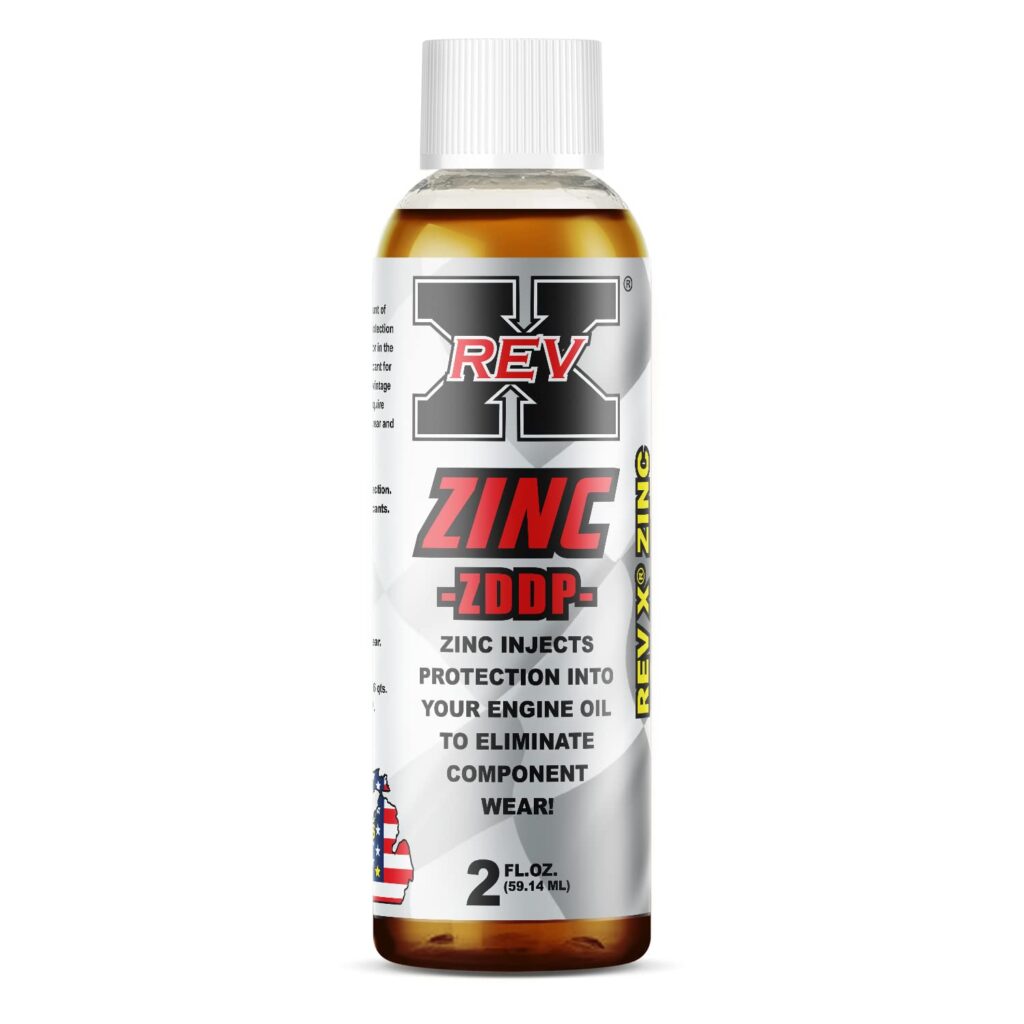A conventional oil change involves draining the old oil and replacing it with new conventional oil. This type of oil is made from crude oil and requires changing every 3,000 to 5,000 miles depending on the vehicle manufacturer’s recommendations.
Regular oil changes are essential to ensure that your vehicle runs smoothly and efficiently. Conventional oil provides lubrication for the engine, reducing friction and ensuring that your engine’s parts don’t wear out too quickly. Over time, however, conventional oil breaks down and becomes less effective.
That’s why it’s recommended that vehicle owners change their oil every 3,000 to 5,000 miles. Failure to change the oil regularly can result in serious engine damage and reduced fuel efficiency. So, if you want to keep your vehicle running smoothly and avoid costly repairs, be sure to get regular oil changes with conventional oil.

Credit: www.youtube.com
Choosing The Right Conventional Oil
Are you wondering which conventional oil to use for your car’s next oil change? With all the different choices available in the market, it can be difficult to know what to choose. Not all conventional oils are created equal, and some may be better suited for your vehicle than others.
Here are some factors to consider when selecting the right conventional oil for your car.
Factors To Consider When Choosing A Conventional Oil
Choosing the right conventional oil can be influenced by several factors. These factors include:
- Your car’s make and model
- The age of your car
- The driving conditions you regularly face
- The type of driving you do
- The mileage on your car’s engine
- The performance requirements of your car’s engine
By considering these factors, you can choose the right oil for your car. For example, if you have an older car with high mileage, it may be best to choose an oil that contains additives that help reduce engine wear.
Comparison Of Different Types Of Conventional Oils Available In The Market
There are different types, or grades of conventional oils available in the market, including sae 30, sae 40, and sae 50. Here’s how they compare:
- Sae 30: This grade of conventional oil is recommended for use in warmer temperatures and is suitable for small engines or machines that don’t require high-performance oil.
- Sae 40: This grade of conventional oil is suitable for use in warmer temperatures and is designed for use in engines that experience significant wear and tear. It’s recommended for use in classic cars and heavy-duty trucks.
- Sae 50: This grade of conventional oil is recommended for use in hotter temperatures and is designed for use in large, heavy-duty engines. It’s appropriate for use in boats, trucks, and farming equipment.
Understanding The Specifications Mentioned On The Oil Packaging
When you’re looking at an oil product package, you’ll see different specifications and certifications that the oil meets. Some of the most common ones include:
- Api certification: This certification ensures that the oil meets the standards set by the american petroleum institute.
- Sae viscosity grade: As we discussed earlier, this specifies the oil’s viscosity.
- Ilsac certification: The international lubricant standardization and approval committee represents automobile manufacturers and oil producers. The certification shows that the oil meets their specifications.
- Acea certification: The european automobile manufacturers’ association certifies acea oils. They recommend different grades of oil based on cars’ make, model, and age.
By understanding these specifications, you can choose the right oil for your car and ensure its optimal performance.
Now that you know what factors to consider, the different types of conventional oils available, and what’s stated on the oil packaging, you can choose the right conventional oil for your vehicle’s next oil change. Remember, every car is different, so it may take some experiment to identify the best fit.
Don’t hesitate to talk to your mechanic or refer to your car’s owner manual for additional guidance.
Signs That Your Engine Needs An Oil Change
Conventional Oil Change
Regular oil changes are crucial for maintaining vehicle engine health. Running an engine with old oil can cause irreparable damage to the engine and lead to expensive repairs. We’ll be focusing on conventional oil changes and how to determine when your engine needs one.
Symptoms To Look Out For Indicating It’S Time For An Oil Change
It is essential to be aware of these symptoms as they help to prevent significant damage to your engine. Always keep an eye on your vehicle’s oil levels and color, and be sure to watch out for these signs:
- Loud engine noise and knocking sound
- Dark and dirty oil
- Exhaust smoke
- Reduced engine power
- Check engine light
The Correlation Between Driving Habits And Frequency Of Oil Change
Your driving habits and style greatly determine when you need an oil change. Distance travelled, frequency of use, and driving conditions contribute to the level of oil degradation. Here’s how to determine your oil change interval:
- If you primarily drive on smooth roads with no traffic, you can go for longer distances before an oil change
- If you drive in heavy traffic, frequently tow or carry a heavy load and drive in hot and dusty conditions, your oil will need changing more frequently
- If you have a sports car or high-performance vehicle, you will also need to change your oil more regularly.
The Effect Of Weather Conditions And Temperature On Engine Oil
Weather conditions and temperatures play a significant role in the viscosity of engine oil. High temperatures will cause the oil to thin out, reducing its lubricating qualities, while colder temperatures will increase the oil’s viscosity, which makes it harder to circulate around the engine.
Here’s how to manage changing weather conditions:
- During summer, if you frequently drive in high-temperature conditions, use a heavier oil viscosity to prevent excessive thinning and wear of engine components
- In cold climates, use a lighter oil viscosity to improve engine performance when starting the car
- Always refer to your vehicle owner’s manual for suggested oil types and oil change intervals based on temperature and weather conditions.
Frequent oil changes are crucial for maintaining your vehicle’s engine health and will extend the life of your car. Keep an eye on these symptoms and driving habits to determine when you need an oil change, and always refer to your owner’s manual for suggested oil types and change intervals.
Steps For Conducting A Conventional Oil Change
Performing an oil change is a crucial maintenance task that will ensure your engine runs smoothly. A conventional oil change is one of the best ways to maintain the health of your engine. Here is a step-by-step guide on how to change your engine oil:
Step-By-Step Guide For Changing Your Engine Oil
- Gather all the necessary tools and equipment; an oil filter wrench, socket wrench set, funnel, oil pan, and new oil filter.
- Park your car on a level surface and allow the engine to cool down.
- Open the hood of your car and find the oil filter and drain plug.
- Place your oil pan under the oil drain plug and remove the plug using the socket wrench set.
- Let the oil drain out completely before replacing the oil drain plug.
- Remove the old oil filter, and replace it with a new one.
- Use a little bit of fresh oil to lube the new filter’s rubber gasket before installing it.
- Locate the oil fill cap and using the funnel, pour in the correct amount of oil for your car.
- After adding the oil, replace the oil fill cap and start the engine.
- Check for any leaks before closing up the hood and clean up any spills.
Necessary Tools And Equipment Needed For The Process
Before beginning your oil change, it’s important to ensure that you have all the necessary equipment and tools. Here are a few things you will need:
- Oil filter wrench
- Socket wrench set
- Funnel
- Oil pan
- New oil filter
- Fresh oil of the recommended weight for your car
Safety Precautions To Be Followed During An Oil Change
Safety is paramount when doing any car maintenance task, including an oil change. Here are some precautions that should be taken:
- Ensure the car is on a level surface and the parking brake is on.
- Allow the engine to cool down to avoid potential burns from hot oil.
- Wear protective gloves and eyewear.
- Use a jack stand when lifting the car to avoid accidents.
- Make sure to dispose of the old oil and filter using environmental guidelines.
By following these steps and precautions, you can successfully change your engine oil and keep your car running smoothly for miles to come.
Common Misconceptions About Conventional Oil Changes
Dispelling Myths About Conventional Oil Changes
There are plenty of misconceptions about conventional oil changes. Here are the facts to clarify these urban legends:
- Myth #1: Conventional oil changes are a thing of the past: the truth is, conventional oil changes are still widely used nowadays. They are a reliable and affordable option for most drivers.
- Myth #2: Conventional oil isn’t high quality: just because conventional oil is cheaper than synthetic, doesn’t mean it’s low quality. Conventional oil goes through a series of refining processes to provide reliable oil changes.
- Myth #3: Conventional oil changes have to be done frequently: while it’s true that synthetic oil can last longer without changing, conventional oil’s longevity is still impressive. With regular maintenance, conventional oil changes should be done every 3,000 to 5,000 miles.
Comparing Benefits Of Synthetic Vs Conventional Oil
Both synthetic and conventional oils have their advantages, so let’s take a look at what sets them apart:
- Synthetic oil: It’s a high-performance oil that provides better lubrication, withstands extreme temperatures, and requires oil changes less frequently (every 6,000 to 10,000 miles). Synthetic oil is more expensive than conventional, but its longer life means you’ll save money in the long run.
- Conventional oil: While it may not be as advanced as synthetic oil, it’s still an effective and affordable option. It provides the necessary lubrication and protection for most engines, and it’s widely available. Its cost is one of its biggest advantages since it’s cheaper than synthetic oil.
Understanding Conventional Oil’S Longevity And Durability
Conventional oil may not be as high-tech as synthetic oil, but it still has plenty of longevity and durability benefits that set it apart. Here are some key things to keep in mind:
- Conventional oil requires regular maintenance: Like any type of oil, regular maintenance is key to keeping conventional oil performing well. By following the manufacturer’s recommendations, you can ensure that your engine is running smoothly.
- Conventional oil is temperature resistant: Conventional oil can withstand a wide range of temperatures, which makes it a reliable option for most drivers. Rest assured knowing that your engine is protected from extreme temperatures.
- Conventional oil is affordable: Cost is one of the biggest advantages of conventional oil. It’s affordable, widely available, and a great option for drivers who prioritize cost savings.
Benefits Of Regular Conventional Oil Changes
Increased Engine Life And Efficiency Resulting From Regular Oil Changes
Regular oil changes are necessary to keep your engine running smoothly and efficiently. They will not only extend the engine’s life but also enhance its performance. Below are some key benefits of regular conventional oil changes:
- Lubrication of engine parts: Oil is responsible for lubricating engine components, reducing wear and tear. Regular oil changes ensure that parts operate correctly and efficiently, allowing the engine to function at its best.
- Removal of engine debris: As oil circulates in an engine over time, it can become contaminated by minute metal particles and other debris. Changing the oil regularly ensures that these contaminants are removed, preventing them from increasing engine friction and enhancing the engine’s efficiency.
Higher Fuel Efficiency And Savings In The Long Run
Regular oil changes are not just good for your engine but will also keep more money in your pocket. Here are some of the benefits:
- Better combustion: Clean oil allows the engine to burn fuel more efficiently, leading to better fuel economy. When the engine is running more efficiently, there is a reduction in fuel consumption, ultimately saving money on fuel costs.
- Reduced repair costs: If your engine doesn’t receive regular oil changes, the build-up of contaminants can cause severe damage, leading to expensive repairs. Ensuring that your oil is clean and fresh will save you money on costly repairs.
Reduction In Engine Wear And Tear With Frequent Oil Changes
Frequent oil changes will result in a significant reduction in engine wear and tear. Here are some key points to consider:
- Reduced engine overheating: Clean oil allows the engine to regulate temperature better, identifying and reducing hot spots that can cause overheating and mechanical breakdown. Regular oil changes also ensure that the oil doesn’t break down under extreme heat, leading to engine damage.
- Less friction and wear: A well-lubricated engine has less metal-to-metal contact and will experience less wear and tear. New oil helps in reducing friction between moving engine parts, leading to less wear and tear. With less wear and tear, you can expect your engine to last longer, saving you money in the long run.
Regular oil changes are a critical part of engine maintenance. Ensuring that your engine has clean and fresh oil helps to enhance its performance and prolong its life while keeping more money in your pocket. Don’t wait for signs of engine damage before you act, take action today, and enjoy the benefits of regular oil changes.
Frequently Asked Questions (Faqs)
Answers To Frequently Asked Questions About Conventional Oil Changes
If you’re a car owner, you’re likely aware of the importance of regular oil changes to maintain your vehicle’s performance. However, you might still have some doubts and concerns about the process. In this section, we’ll discuss some frequently asked questions regarding conventional oil changes.
How Often Should You Change Your Oil?
One of the most common questions car owners have is how frequently they should change their oil. The answer varies depending on the type of oil your vehicle uses and your driving habits. As a general rule, it’s recommended to have your oil changed every 3,000 miles or every three months.
However, newer cars and synthetic oil can stretch the time between oil changes to as long as 7,500 miles or more.
What Type Of Oil Is Best For Your Car?
Choosing the right type of oil is important since it directly impacts your car’s performance. Conventional oil is the most common type of oil recommended by mechanics and car manufacturers. It’s a good option for drivers who don’t put too much strain on their cars.
Synthetic oil, on the other hand, is ideal for high-performance cars, extreme temperatures, and heavy-duty use.
Can You Switch To Synthetic Oil After Using Conventional Oil?
Yes, you can switch to synthetic oil from conventional oil, even if your car is older. However, it’s important to note that synthetic oil is more expensive than conventional oil, so you’ll need to budget accordingly. If you’re unsure whether your car will benefit from synthetic oil, consult your mechanic.
What Happens If You Skip An Oil Change?
Skipping an oil change may seem harmless, but it can lead to serious issues down the line. Over time, dirt and debris build up in your oil, which can cause your engine to wear out faster and reduce fuel efficiency.
If you skip too many oil changes, you could even face costly engine repairs or replacement.
How Long Does A Conventional Oil Change Take?
Typically, a conventional oil change takes about 30 minutes to an hour. However, wait times may vary depending on your mechanic’s workload and your car’s make and model. It’s always a good idea to call ahead and make an appointment to avoid long wait times.
Should You Change The Oil Filter Every Time You Change Your Oil?
Yes, you should change your oil filter every time you get your oil changed. Your oil filter removes debris and contaminants from your oil, helping to protect your engine. It’s crucial to keep your oil filter clean to maintain proper engine performance and avoid costly repairs.
Taking care of your car’s oil is crucial to maintaining its longevity and performance. By understanding the mechanics of conventional oil changes, you can make informed choices about the care of your vehicle.
Frequently Asked Questions Of Conventional Oil Change
What Is A Conventional Oil Change?
A conventional oil change involves using traditional motor oil to lubricate and protect your engine.
Why Do I Need A Conventional Oil Change?
Regular oil changes help keep your engine running smoothly, improving fuel efficiency and preventing damage.
How Often Should I Get A Conventional Oil Change?
Most manufacturers recommend getting an oil change every 5,000-7,500 miles or every 6 months, whichever comes first.
What’S The Difference Between Conventional And Synthetic Oil?
Synthetic oil is made from chemical compounds instead of crude oil, making it more expensive but more durable and longer-lasting.
How Long Does A Conventional Oil Change Take?
A typical oil change takes around 30 minutes to complete, but this can vary depending on your vehicle and the shop you use.
Conclusion
Maintaining a car is a crucial task that involves regular oil changes. The conventional oil change has been a popular option among car owners as it provides the necessary lubrication to the engine. This oil type is affordable and readily available, making it a convenient option for those who prefer simple maintenance routines.
However, the downside is it needs more frequent changes compared to synthetic oil. Nonetheless, conventional oil change is still a practical choice for new or low-mileage vehicles. As with any car maintenance routine, it is important to follow the manufacturer’s recommendations and get the oil changed at regular intervals.
By doing so, you can ensure that your car runs smoothly, increases the lifespan of the engine, and avoids expensive repairs. Keep in mind that investing in proper car maintenance can save you money in the long run and give you peace of mind on the road.








